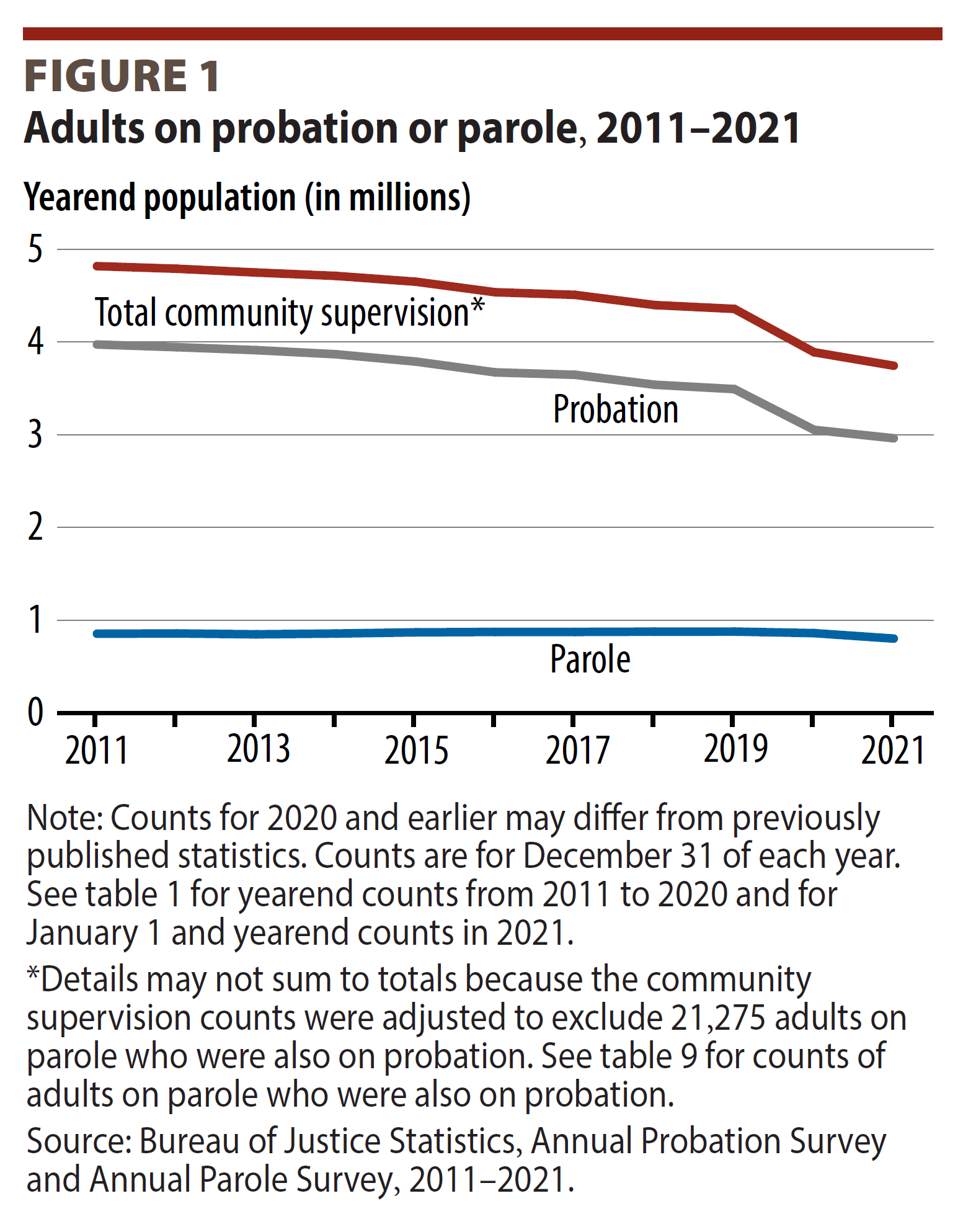Overview
Transitioning back into the community following a period of incarceration can be challenging for reasons ranging from substance use to lack of employment options. Rehabilitation and reentry support are key components of community corrections programs.
Corrections officials can help people navigating reentry overcome challenges by working with community treatment organizations to match the appropriate levels of supervision and service to the right person at the right time.
How Many People Are Under Community Supervision?
More than 3.7 million Americans were under community supervision at yearend 2021, down 22% from 2011, according to a report from the Bureau of Justice Statistics.
According to BJS data, the estimated 1 in 69 adult U.S. residents under community supervision at the end of 2021 was the lowest rate since 1987.
In 2021, the BJS report also found the probation population declined for the fourteenth consecutive year, falling below 3 million for the first time since 1994.
The parole population decreased by 8.6% from 2019 to 2021 after it had remained relatively stable from 2011 to 2019.
How Technology Is Used in Community Corrections
Digital technology offers community corrections officials new tools to monitor individuals on probation or parole and help keep them on track.
For example, new technologies can enhance communication between supervisors and those convicted of an offense. Smartphone-based video, text, or instant messaging may strengthen lines of communication to ensure individuals satisfy their legal requirements.
However, there are many challenges in applying emerging technology to community supervision. Sponsored by the National Institute of Justice (NIJ), a workshop of national experts in community corrections identified priority needs for leveraging technology to enhance supervision and improve outcomes for individuals on probation or parole.
These priorities included improving officer training and well-being as well as how to address misconduct and substance use by persons under supervision.
NIJ has also supported research of a web-based planning tool to facilitate reentry and found that planning and training to implement these types of services are critical, should it prove to be successful for both the agency and client.
OJP Support for Community Corrections Programs
The Bureau of Justice Assistance administers several programs that support efforts to improve community-based corrections rehabilitation programs and practices, including the Justice Reinvestment Initiative (JRI). A 2021 report highlighted the ways in which 17 states have used the strategies, training, and technical assistance offered through JRI to improve community supervision programs and reduce recidivism.
Research and evaluation supported by NIJ covers a wide range of topics related to community corrections, including evaluations of the Second Chance Act and an overview of NIJ investments in reentry.
To help inform practitioners and policymakers on best practices, NIJ’s CrimeSolutions.ojp.gov reviewed numerous community corrections programs and practices, detailing what works, what doesn’t, and what is promising in achieving specific outcomes.
More on Community Corrections from OJP
Visit the following pages for additional information and resources produced or sponsored by the Office of Justice Programs and other federal agencies:
| Community Corrections Equipment and Technology | Community Corrections Statistics |
| Community Corrections Training | Community Corrections Additional Resources |







